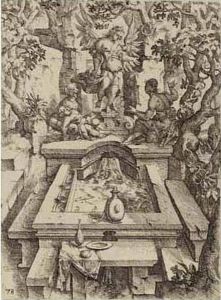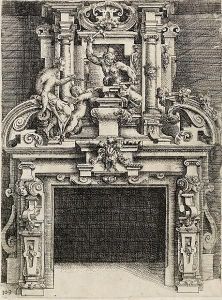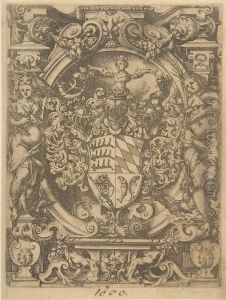Wendel I Dietterlin Paintings
Wendel (or Wendelin) Dietterlin, born in 1550 in Pfullendorf, Holy Roman Empire (now Germany), was a significant figure in the Northern Mannerism movement, particularly known for his work in architecture, painting, and engraving. His full name, Wendel Dietterlin the Elder, distinguishes him from his lesser-known descendants who also were artists. Dietterlin's contribution to the arts is most notably encapsulated in his architectural treatise, which profoundly influenced the development of Baroque architecture in the German-speaking regions and beyond.
Dietterlin's early life is sparsely documented, but it is known that he was active in Strasbourg, where he created most of his enduring works. His artistic journey was primarily shaped by the cultural and intellectual currents of the late Renaissance, a period that saw a burgeoning interest in the classical antiquity's revival and its amalgamation with contemporary artistic expressions. Dietterlin's work, however, leaned more towards the fantastical and ornamental aspects of Mannerism, emphasizing complexity, eccentricity, and a departure from classical restraint.
The pinnacle of Dietterlin's oeuvre is his architectural treatise 'Architectura', published in five parts between 1593 and 1594. This work is a comprehensive study of the five orders of architecture (Tuscan, Doric, Ionic, Corinthian, and Composite) and is lavishly illustrated with engravings that showcase Dietterlin's imaginative approach to architectural design. His illustrations went beyond the mere academic study of the orders; they were inventive, blending architectural elements with naturalistic details and fantastical creatures, thus pushing the boundaries of traditional architectural representation. 'Architectura' served not just as a manual for architects but also as a source of inspiration for decorative arts, including furniture design and ornamentation.
Despite the acclaim for his architectural treatise, little is known about Dietterlin's built works, suggesting that his influence was primarily through his printed works rather than physical constructions. His engravings, rich in detail and creativity, were circulated widely in Europe, contributing to the spread of Mannerist aesthetics in architecture and the decorative arts. Wendel Dietterlin's legacy is that of a visionary who, through his theoretical and graphic works, played a pivotal role in the transition from Renaissance to Baroque art and architecture. He died in Strasbourg in 1599, leaving behind a body of work that continues to be studied and admired for its artistic ingenuity and historical significance.


